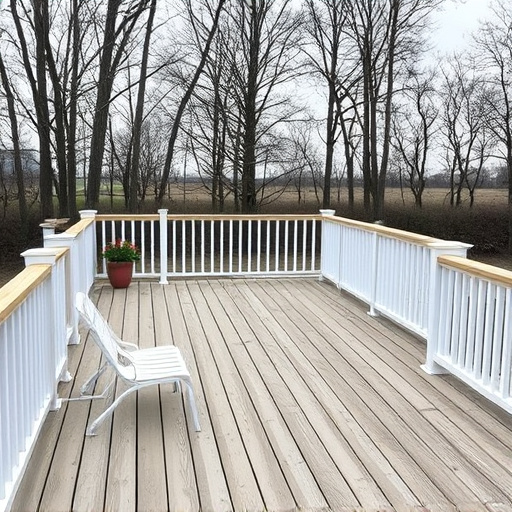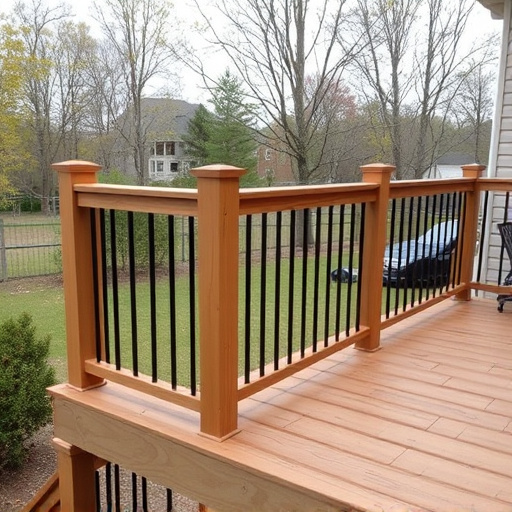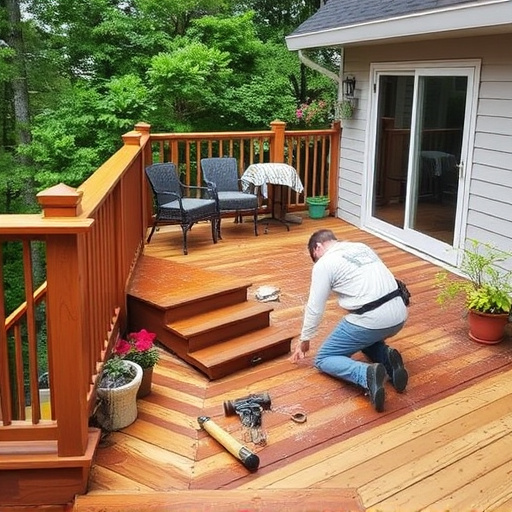Deck sealing is a vital process for maintaining outdoor spaces, preventing moisture damage and extending deck life. Regular sealing (1-3 years) involves cleaning, repairing, and applying water-repellent sealants like oil-based or polyurethane. Choosing the right sealant based on decking material, age, and climate ensures maximum protection against water intrusion. Application requires thorough cleaning, drying, and even coating for optimal water resistance, beneficial for both residential and commercial siding maintenance.
Protecting your deck from water damage is essential for maintaining its beauty and longevity. This guide delves into the art of deck sealing, offering a comprehensive overview of techniques to achieve maximum water resistance. From understanding the fundamentals to selecting the ideal sealing agent, we provide a step-by-step approach for optimal protection. Learn how to safeguard your deck against moisture intrusion, ensuring a durable and vibrant finish for years to come.
- Understanding Deck Sealing: The Basics
- Choosing the Right Sealing Agent for Optimal Protection
- Applying Sealer: Step-by-Step Guide to Maximum Water Resistance
Understanding Deck Sealing: The Basics

Deck sealing is a vital process for any homeowner looking to protect their outdoor living space. It’s not just about making your deck look nicer; it’s about ensuring maximum water resistance and extending the life of your deck. By sealing, you create a barrier that prevents moisture from seeping into the wood, which can cause rot, warping, and other structural damage over time. This is particularly important for residential roofing solutions, as a well-sealed deck acts as an additional layer of defense against water intrusion.
When it comes to deck sealing techniques, understanding the basics is key. The process involves applying a protective coating or sealant to the deck’s surface. These sealants can be oil-based, polyurethane, or silicone-based, each offering different levels of durability and protection. For optimal results, proper preparation is essential. This includes cleaning the deck thoroughly, repairing any damaged boards, and ensuring the surface is dry before applying the sealant. Home service solutions often recommend regular sealing—typically every 1-3 years—to maintain the deck’s integrity and appearance, especially in areas with high rainfall or frequent use.
Choosing the Right Sealing Agent for Optimal Protection

When it comes to deck sealing techniques for maximum water resistance, selecting the appropriate sealing agent is a key first step. The right sealant should offer superior protection against moisture infiltration while also being compatible with your deck’s material and construction. Consider factors like the type of wood or composite decking, its age, and the local climate when choosing a product. Water-repellent sealants are ideal for preventing water absorption, ensuring your deck remains sturdy and looking its best for longer.
For optimal results, opt for high-quality sealants that are designed to withstand harsh weather conditions and regular exposure to sunlight. Additionally, ensure the sealant you select not only protects the deck’s surface but also fills microscopic pores and cracks, preventing water from seeping in through these entry points. Professional siding and gutters can help complement your home service solutions by directing water away from the deck, further enhancing its water resistance and longevity.
Applying Sealer: Step-by-Step Guide to Maximum Water Resistance

Applying a deck sealer is a straightforward process that significantly enhances your deck’s water resistance. Start by ensuring your deck is clean and free from dirt, debris, or existing sealers. This involves sweeping the deck thoroughly and power washing if necessary to remove any buildup. Once the deck is dry, choose an appropriate time to apply the sealer, ideally when weather conditions are optimal for fast drying.
Next, stir the sealer thoroughly according to the manufacturer’s instructions. Use a brush or a roller, depending on the product, to evenly distribute the sealer across the deck’s surface. Begin at one corner and work your way across the deck in straight lines, overlapping each pass slightly to ensure complete coverage. Allow the first coat to dry completely before applying a second coat for maximum protection against water penetration. For commercial siding or residential siding applications, this meticulous process guarantees that your exterior home improvements remain in top condition, protecting against moisture damage and extending their lifespan.
Deck sealing is a vital step in protecting your outdoor investment. By understanding the basics and choosing the right sealing agent, you can ensure maximum water resistance for years to come. Following our step-by-step guide will help you achieve a durable, protective finish that stands up against the elements. Implement these techniques for optimal results in deck sealing.














